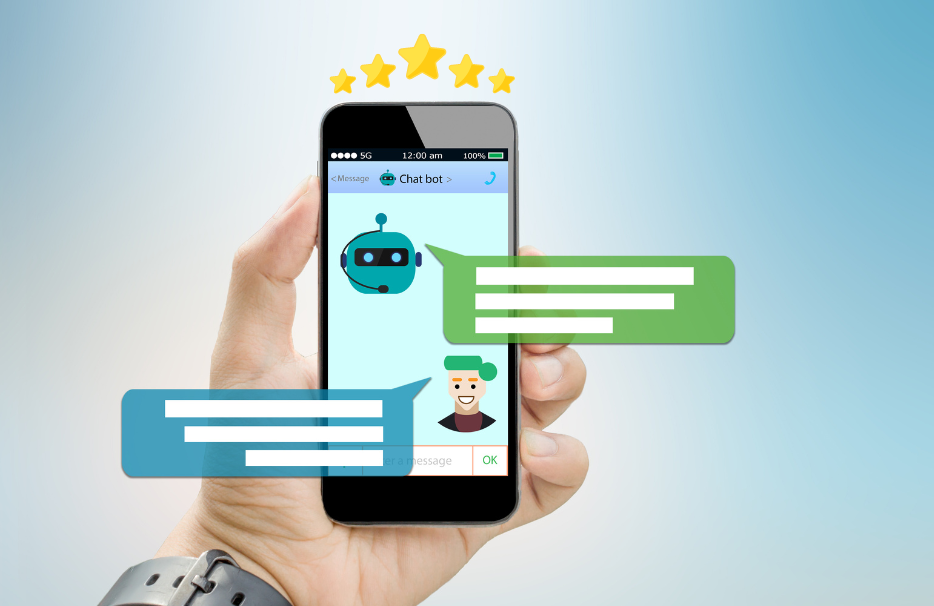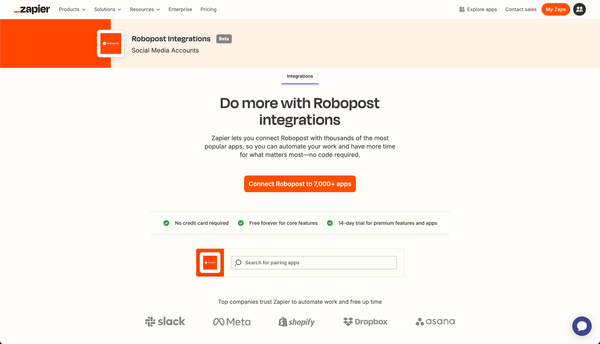The Role of Chatbots in Social Media Marketing Strategies
Explore how chatbots enhance social media marketing with strategic implementation, integration, and measurable success.

Chatbots have become an essential tool in social media marketing, helping businesses interact with their audience, improve customer service, and strengthen their marketing strategies. By mimicking human conversations and giving quick responses, chatbots improve the customer experience and build brand loyalty. This article explores how chatbots are used in social media marketing, including how to implement them effectively and measure their impact on your marketing efforts.
Key Takeaways
- Chatbots use AI to mimic human conversation, offering round-the-clock customer support and personalized interactions.
- Combining chatbots with your current marketing channels, like social media and email, can create a smooth customer experience.
- To handle challenges with chatbots, focus on conversation quality, set clear expectations, and keep learning and improving.
- To measure how well your chatbot is doing, look at key performance indicators, engagement and conversion rates, and how cost-effective it is.
Understanding Chatbot Marketing
Defining Chatbot Marketing
Chatbot marketing uses the power of AI to simulate real-time conversations with users, providing a seamless and interactive customer experience. Chatbots are revolutionizing the way businesses communicate with their audience, offering instant responses and support around the clock.
- Customer Engagement: Chatbots engage customers through personalized interactions, enhancing the overall experience.
- Automation: They automate repetitive tasks, freeing up human resources for more complex issues.
- Sales and Support: Chatbots assist in driving sales and providing customer support, acting as a first point of contact.
By integrating chatbots into their marketing strategies, businesses can achieve a variety of objectives, from improving customer service to boosting conversion rates. The key is to design chatbots that are not only functional but also personable and aligned with the brand's voice.
Key Benefits of Chatbots for Businesses
Chatbots have changed the way businesses handle customer service and engagement, offering many benefits. They provide instant support 24/7, ensuring that customer questions are answered anytime, which is important in today’s fast-paced world.
Chatbots also offer personalized experiences by using customer data to customize conversations and recommendations, making each interaction unique and more likely to lead to a sale. This personalization helps build a stronger connection between the brand and its customers.
Moreover, chatbots boost engagement and conversions by making interactions more enjoyable and interactive. They also help in generating leads by collecting valuable customer information and qualifying leads through engaging conversations.
Integrating Chatbots with Marketing Channels
Combining Chatbots with Social Media
Integrating chatbots with social media channels is a smart strategy that can greatly improve how customers interact with your brand and make their journey smoother. By providing personalized help and answering common questions, chatbots on platforms like Facebook, Twitter, and Instagram can offer instant support and guide users toward making a purchase or taking another desired action.
- Personalization is important for successful chatbot interactions on social media. With the help of natural language processing (NLP), chatbots can create conversations that feel natural and are tailored to each user.
- Chatbots can also work alongside other marketing channels, creating a consistent approach to communicating with customers. This makes it easier for customers to move between different platforms, whether it’s social media, email, or your website.
Enhancing Email Campaigns with Chatbots
Chatbots are changing email marketing by making it more personal and interactive right in the inbox. They can boost engagement by starting conversations and leading users through different interactions. This helps nurture leads and makes it easier to collect customer information and feedback.
When chatbots are added to email campaigns, they enable real-time interactions that can result in immediate conversions. For example, a chatbot can answer product questions, suggest items, or even handle purchases directly within the email. This convenience can improve the customer experience and drive more sales.
Overcoming Chatbot Marketing Challenges
Managing Quality of Conversations
Maintaining high-quality chatbot conversations is important for keeping customers happy and meeting their expectations. Businesses need to stay on top of changing language and interaction trends to make sure conversations stay relevant and engaging. To tackle these challenges, chatbots should have advanced Natural Language Processing (NLP) abilities, so they can understand and respond like a human.
Ongoing training with AI and machine learning is important for chatbots to keep up with changing language and customer preferences. This continuous improvement makes sure chatbots remain effective. It’s also important to clearly define what the chatbot can do, so customers know what to expect and avoid frustration:
- Understand what customers are asking and give accurate answers
- Provide personalized experiences using user data
- Stick to a clear set of tasks to manage user expectations
By focusing on these areas, businesses can ensure chatbot conversations are of high quality, leading to positive customer experiences and lasting growth.
Setting Expectations and Boundaries
In chatbot marketing, it's important to set clear expectations and boundaries to keep customers satisfied and ensure high-quality conversations. Customers need to know what chatbots can and cannot do, which helps avoid frustration and disappointment.
To make this happen, businesses should clearly define what they want their chatbots to achieve, like improving customer service, increasing sales, or making lead generation more efficient. It's also important to set up ways to measure how well the chatbots are performing. A clear list of tasks that the chatbot can handle will help guide customers to make the most of their interactions and prevent unrealistic expectations.
Additionally, being transparent about the chatbot's limitations is key. This openness helps manage customer expectations and leads to a better user experience.
Continuous Learning and Improvement
For chatbots to stay effective in social media marketing, they need to keep up with how consumer interactions are changing. Continuous learning and improvement are important to ensure that chatbot responses remain relevant and accurate. This means regularly updating the chatbot's knowledge base and algorithms based on real-time interactions.
Involving human moderators can quickly handle complex issues that chatbots can't manage, ensuring smooth customer service. Additionally, using AI and machine learning helps chatbots adjust to new language trends and customer preferences, which is key to maintaining high-quality conversations.
By focusing on these areas, businesses can tackle the challenges of chatbot marketing, leading to better customer experiences and long-term growth.
Measuring Chatbot Marketing Success
Key Performance Indicators (KPIs)
To measure how well chatbot marketing is working, businesses need to track specific Key Performance Indicators (KPIs). These metrics show not only how the chatbot is performing but also how it's helping the company reach its marketing goals.
One key metric is the conversion rate, which tells you how many users take the desired action after chatting with the bot. This could be anything from making a purchase to signing up for a newsletter. Keeping an eye on conversion rates helps you see how well the chatbot is helping to meet sales goals.
Another important KPI is the engagement rate, which measures how often and how deeply users interact with the chatbot. High engagement rates usually mean that users find the chatbot useful and are more likely to come back or recommend it to others.
Customer satisfaction scores are also important. They give you insight into how users feel about their interactions with the chatbot and the quality of service they received. Positive scores often mean successful chatbot interactions, leading to higher customer retention and loyalty.
By regularly checking these KPIs, businesses can make informed decisions to improve their chatbot strategies, making sure they meet both customer needs and business goals.
Analyzing Engagement and Conversion Rates
Understanding how users interact with chatbots is key to improving social media marketing strategies. Engagement rates show how often customers interact with the chatbot, giving insights into how well the chatbot keeps users interested. Tracking these rates helps businesses see how the chatbot is performing and gather feedback on how useful it is.
Similarly, analyzing conversion rates is important for seeing how well chatbots turn leads into customers. This metric helps understand the chatbot's direct impact on the company's sales. A good chatbot strategy can lead to more engagement, which often means better conversion rates.
Here's a simple table to explain these metrics:
Metric | Description |
|---|---|
Engagement Rate | Volume of user interactions with the chatbot |
Conversion Rate | Percentage of leads that become customers |
By regularly monitoring these metrics, companies can make informed decisions to improve their chatbot strategies, making sure they meet marketing goals and customer expectations.
Cost-Effectiveness and Operational Efficiency
Chatbots are changing how businesses handle customer service and marketing. Using chatbots can save money and improve how companies operate. By automating routine tasks, companies can reduce the need for large customer service teams, which lowers costs.
To see how cost-effective chatbots are, companies should look at different metrics. Here's a quick overview:
- ENGAGEMENT RATES: This measures how often customers interact with chatbots.
- CONVERSION RATES: This shows how many leads become customers, indicating how chatbots affect the company's profits.
The main goal is to save money with chatbots without hurting the customer experience. With careful planning and ongoing improvements, chatbots can become a key part of a company's marketing strategy.
Conclusion
Chatbots have become a important tool for businesses wanting to improve customer experience and streamline their marketing efforts. They offer round-the-clock availability, personalized interactions, and higher engagement rates, changing how brands connect with their audiences. To use chatbots effectively, businesses need to clearly define their goals, integrate them well with their existing marketing channels, and measure their impact. Even though there are challenges, the cost savings and efficiency of chatbots make them essential for staying competitive and meeting customer needs. Embracing chatbot marketing is not just about following trends—it's about actively working towards growth and providing excellent customer service in today’s digital world.
